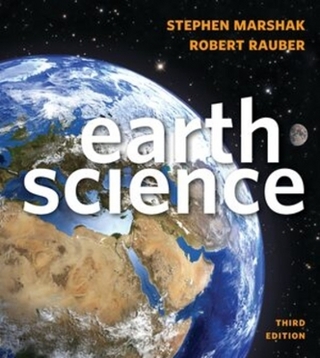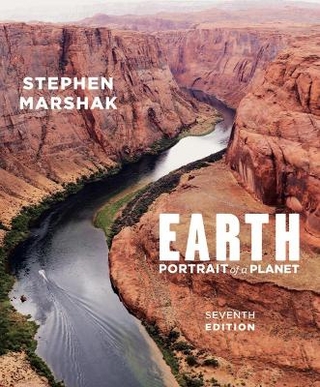
Handbook of the Anthropocene
Springer International Publishing
978-3-031-25909-8 (ISBN)
This Handbook is a collection of contributions of more than 300 researchers who have worked to grasp the Anthropocene, this new geological epoch characterised by a modification of the conditions of habitability of the Earth for all living things, in its biogeophysical and socio-political reality. These researchers also sought to define a historical and prospective anthropology that integrates social, economic, cultural and political issues as well as, of course, environmental ones. What are the anthropological changes needed to ensure that our human adventure will be able to continue in the Anthropocene? And what are the educational and political issues involved?
Anthropocene is fast becoming a widely-used term, but thus far, there been no reference work explaining the thoughts of the greatest experts of the present day on this subject (at the intersection of biogeophysical and socio-political knowledge). A scientific and political concept (but which is also theconceptual vehicle for conveying the scientific community's sense of concern), this complex term is explained by international experts as they reflect on scientific arguments taking place in earth system science, the social sciences and the humanities. What these researchers from different disciplines have in common is a healthy concern for the future and how to prepare for it in the Anthropocene and also the identification of possible anthropological changes. This Handbook encourages readers to immerse themselves in reflections on the human adventure through descriptions of our differing heritages and the future that is in the process of being written.
Nathanaël Wallenhorst is Associate Professor at the Catholic University of the West (UCO). He is Doctor of Educational Sciences and Doktor der Philosophie (first international co-supervision PhD), and Doctor of Environmental Sciences and Doctor in Political Science (second international co-supervisionPhD). He is the author of ten books on politics, education, and anthropology in the Anthropocene. He is the leading contributor to the collections « EnAnthropocène » (Bord de l’eau) and « Anthropocene / Anthropozän / Anthropocène » (Peter Lang).His passion: trying to listen to the future. Christoph Wulf is Professor of Anthropology and Education and a member of the Interdisciplinary Centre for Historical Anthropology, the Collaborative Research Centre (SFB, 1999-2012) “Cultures of Performance,” the Cluster of Excellence (2007-2012) “Languages of Emotion,” and the Graduate School “InterArts” (2006-2015) at the Freie Universität Berlin. His books have been translated into 20 languages. For his research in anthropology and anthropology of education, he received the title “professor honoris causa” from the University of Bucharest. He is Vice-President of the German Commission for UNESCO.
Chapter 1. Acceleration.- Chapter 2. Activist.- Chapter 3. Aesthetics .- Chapter 4. Agenda.- Chapter 5. Agriculture.- Chapter 6. Air.- Chapter 7. Amazon.- Chapter 8. Animal.- Chapter 9. Animal citizenship.- Chapter 10. Anthrome.- Chapter 11. Anthropocene.- Chapter 12. Anthropocene Working Group.- Chapter 13. Anthropocentrism.- Chapter 14. Anthropological mutations.- Chapter 15. Anthropology.- Chapter 16. Anxiety.- Chapter 17. Apocalypse.- Chapter 18. Architecture.- Chapter 19. Art.- Chapter 20. Artificial Intelligence.- Chapter 21. Asceticism.- Chapter 22. Asian Anthropocene.- Chapter 23. Atmosphere.- Chapter 24. Atomic destruction.- Chapter 25. Biocapacity and regeneration.- Chapter 26. Biodiversity.- Chapter 27. Bioeconomics.- Chapter 28. Bioeconomy.- Chapter 29. Biosphere.- Chapter 30. Birth.- Chapter 31. Body.- Chapter 32. Hope.- Chapter 33. Borders.- Chapter 34. Housing.- Chapter 35. Boundaries.- Chapter 36. Brundtland Commission.- Chapter 37. Buen Vivir.- Chapter 38. Capability, Capabilities .- Chapter 39. Capital.- Chapter 40. Capitalocene.- Chapter 41. Carbon.- Chapter 42. Care.- Chapter 43. Carrying Capacity.- Chapter 44. Catastrophe.- Chapter 45. Childhood.- Chapter 46. Cities in transition.- Chapter 47. Citizenship.- Chapter 48. Citizenship Education.- Chapter 49. Climate education.- Chapter 50. Climate Ethics.- Chapter 51. Co-existence.- Chapter 52. Climate justice.- Chapter 53. Closing Time.- Chapter 54. Club of Rome.- Chapter 55. Collapsonauts.- Chapter 56. Commons.- Chapter 57. Community (a case study).- Chapter 58. Competence .- Chapter 59. Convivialism .- Chapter 60. COVID-19.- Chapter 61. Complexity.- Chapter 62. Consumption.- Chapter 63. Cooperation.- Chapter 64. Coral.- Chapter 65. Cosmos.- Chapter 66. Courage.- Chapter 67. Critical Zone.- Chapter 68. Culture.- Chapter 69. Dating debate.- Chapter 70. Degrowth.- Chapter 71. Deep Ecology.- Chapter 72. Democracy.- Chapter 73. Denialism.- Chapter 74. Didactics.- Chapter 75. Digitalization/Digital Transformation.- Chapter 76. Doughnut.- Chapter 77. Dualism.- Chapter 78. Dystopia.- Chapter 79. Earth Jurisprudence.- Chapter 80. Disasters.- Chapter 81. Earth History.- Chapter 82. Earth Overshoot Day.- Chapter 83. Earth stewardship.- Chapter 84. Earth Systems.- Chapter 85. Earth System.- Chapter 86. Earth system law.- Chapter 87. Earthquakes.- Chapter 88. Ecocide.- Chapter 89. Ecological Citizenship.- Chapter 90. Ecological Economics.- Chapter 91. Ecological footprint.- Chapter 92. Bringing life.- Chapter 93. Emergency.- Chapter 94. Emotional Commodisation.- Chapter 95. Emotions.- Chapter 96. Empowerment.- Chapter 97. Energy.- Chapter 98. Enlivenment.- Chapter 99. Entropy.- Chapter 100. Environment.- Chapter 101. Environmental ethics.- Chapter 102. Environmental Justice.- Chapter 103. Environmental Protection.- Chapter 104. Equity and Equality.- Chapter 105. Ethics of care.- Chapter 106. Ethics of justice.- Chapter 107. Eurocentrism.- Chapter 108. Evolution and hominization.- Chapter 109. Existence.- Chapter 110. Fake News.- Chapter 111. Feminism and Gender.- Chapter 112. Feral.- Chapter 113. Fire.- Chapter 114. Food.- Chapter 115. Finitude.- Chapter 116. Forests.- Chapter 117. Freedom.- Chapter 118. Future.- Chapter 119. Gaia.- Chapter 120. Genetic Engineering Revolution.- Chapter 121. Geoengineering.- Chapter 122. Geosphere.- Chapter 123. Gesture.- Chapter 124. Global change.- Chapter 125. Globalization.- Chapter 126. Good Anthropocene.- Chapter 127. Great Acceleration.- Chapter 128. Growth.- Chapter 129. Habitat.- Chapter 130. Habits.- Chapter 131. Habitus.- Chapter 132. Health.- Chapter 133. Health education.- Chapter 134. Heat, Heat Wave.- Chapter 135. History.- Chapter 136. Holocene.- Chapter 137. Home, Homeland.- Chapter 138. Homo oeconomicus, Homo collectivus and Homo religatus.- Chapter 139. Hospitality.- Chapter 140. Human adventure.- Chapter 141. Human Condition.- Chapter 142. Human existence.- Chapter 143. Human genome.- Chapter 144. Human reconfiguration of the biosphere.- Chapter 145. Human Rights.- Chapter 146. Humanities.- Chapter 147. Humour.- Chapter 148. Hunger.- Chapter 149. Hydro-social cycle.- Chapter 150. Hydrosphere.- Chapter 151. Imagination.- Chapter 152. Industrial revolution.- Chapter 153. Industry.- Chapter 154. Inertia.- Chapter 155. Institution.- Chapter 156. Integral development.- Chapter 157. Intercultural Education.- Chapter 158. Interculturality.- Chapter 159. International Law.- Chapter 160. Intergenerational Justice.- Chapter 161. IPBES.- Chapter 162. IPCC.- Chapter 163. Just transition.- Chapter 164. Kairos.- Chapter 165. Knowledge.- Chapter 166. Lack.- Chapter 167. Landscape.- Chapter 168. Learning for Action.- Chapter 169. Limitations.- Chapter 170. Life.- Chapter 171. Living.- Chapter 172. Machine.- Chapter 173. Mass extinction.- Chapter 174. Media.- Chapter 175. Megafaunal Extinction.- Chapter 176. Microbes.- Chapter 177. Mimesis.- Chapter 178. Migration.- Chapter 179. Mobility.- Chapter 180. Museum.- Chapter 181. Mutualistic cities.- Chapter 182. Narratives.- Chapter 183. Natural and cultural heritage.- Chapter 184. Nature.- Chapter 185. NBIC.- Chapter 186. Neoliberalism.- Chapter 187. Networks.- Chapter 188. New Humanities.- Chapter 189. New Viruses.- Chapter 190. Nuclear War.- Chapter 191. Nuclear Waste.- Chapter 192. Ocean.- Chapter 193. Otherness.- Chapter 194. Overshoot.- Chapter 195. Pantheism.- Chapter 196. Participation.- Chapter 197. Pathways and Solutions.- Chapter 198. Peace.- Chapter 199. Permaculture.- Chapter 200. Permafrost.- Chapter 201. Politics.- Chapter 202. Pollution.- Chapter 203. Postcolonialism.- Chapter 204. Posthumanism.- Chapter 205. Poverty.- Chapter 206. Precautionary Approach.- Chapter 207. Progress.- Chapter 208. Quaternary.- Chapter 209. Racism.- Chapter 210. Relatedness.- Chapter 211. Religion.- Chapter 212. Renewable energy.- Chapter 213. Resilience.- Chapter 214. Resonance.- Chapter 215. Resources.- Chapter216. Responsibility.- Chapter 217. Risk.- Chapter 218. Rituals.- Chapter 219. Robot.- Chapter 220. Scale.- Chapter 221. School.- Chapter 222. Science.- Chapter 223. Sea level change.- Chapter 224. Security.- Chapter 225. Sejahtera.- Chapter 226. Slavery.- Chapter 227. Sobriety.- Chapter 228. Societal boundaries.- Chapter 229. Social Contract Theory.- Chapter 230. Social Ecology.- Chapter 231. Social growth.- Chapter 232. Social performance.- Chapter 233. Society.- Chapter 234. Soil.- Chapter 235. Solastalgia.- Chapter 236. Sounds.- Chapter 237. Sovereignty.- Chapter 238. Space.- Chapter 239. Sport.- Chapter 240. Stratigraphy.- Chapter 241. Sufficiency.- Chapter 242. Sustainable development.- Chapter 243. Symbolic boundaries.- Chapter 244. System.- Chapter 245. Synthetic Biology.- Chapter 246. Philosophy.- Chapter 247. Planet.- Chapter 248. Planetary boundaries.- Chapter 249. Plant.- Chapter 250. Plantationocene.- Chapter 251. Plasticity.- Chapter 252. Technology.- Chapter 253. Technoscientific Materialism.- Chapter 254. Technosphere.- Chapter 255. Terraformation.- Chapter 266. Thought.- Chapter 267. Time.- Chapter 268. Tipping Points.- Chapter 269. Tragedy.- Chapter 270. Transactions (social and democratic).- Chapter 271. Transdisciplinary.- Chapter 272. Transformation.- Chapter 273. Transhumanism.- Chapter 274. Trust.- Chapter 275. UN Institutions.- Chapter 276. UNESCO.- Chapter 277. Urban Ecology.- Chapter 278. Utopia.- Chapter 279. Values.- Chapter 280. Violence.- Chapter 281. Virtuality.- Chapter 282. Virtue Ethics.- Chapter 283. Viruses.- Chapter 284. Vulnerability.- Chapter 285. War.- Chapter 286. Waste.- Chapter 287. Water.- Chapter 289. Wisdoms.
| Erscheint lt. Verlag | 18.8.2023 |
|---|---|
| Zusatzinfo | LI, 1726 p. 1 illus. In 2 volumes, not available separately. |
| Verlagsort | Cham |
| Sprache | englisch |
| Maße | 155 x 235 mm |
| Gewicht | 3369 g |
| Themenwelt | Geisteswissenschaften ► Philosophie |
| Naturwissenschaften ► Geowissenschaften ► Geologie | |
| Sozialwissenschaften ► Ethnologie | |
| Sozialwissenschaften ► Soziologie | |
| Schlagworte | Aesthetics and Ethics • Anthropocene understanding • Bioeconomics and anthropocene • Capitalocene • Convivialism • Earth stewardship • ecological thinking • Future of Technology • Homo oeconomicus, homo collectivus, homo religatus • human activities on Earth System • Humanity in the Biosphere • Machine/Robot anthropocene • Mass Extinction anthropocene • New Humanism • planetary boundaries • Politics in the Anthropocene • Prospective Anthropology • Sustainable development anthropocene • Sustainable Education |
| ISBN-10 | 3-031-25909-2 / 3031259092 |
| ISBN-13 | 978-3-031-25909-8 / 9783031259098 |
| Zustand | Neuware |
| Informationen gemäß Produktsicherheitsverordnung (GPSR) | |
| Haben Sie eine Frage zum Produkt? |
aus dem Bereich


